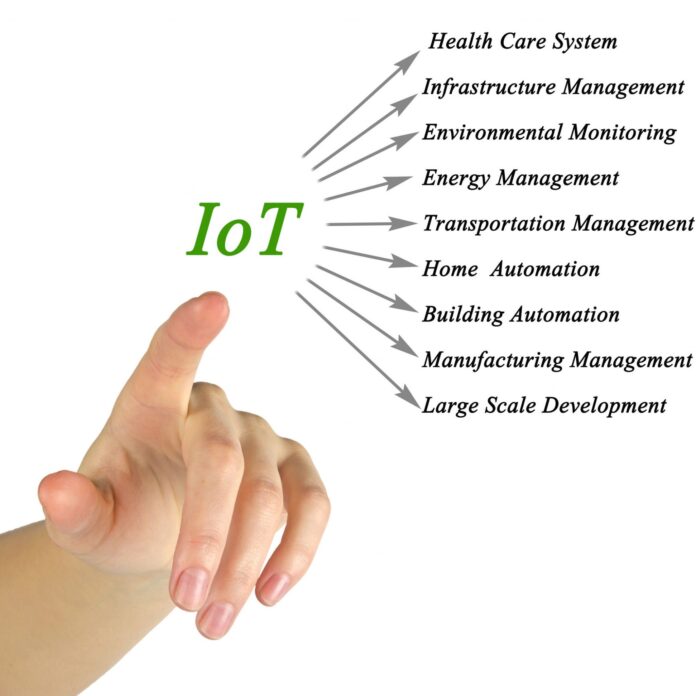Initiatives like Germany’s Industrie 4.0 and Made in China 2025 seed regional IoT economy
The “Internet of Things” promises to connect 20 billion previously unconnected objects by 2020. As the IoT takes shape, some global regions, largely due to government-led planning, are emerging as likely dominant forces in the IoT economy.
Just like the projections for number of connected devices by 2020, there are a lot of figures floating around for the economic impact of the IoT.
For instance, McKinsey & Company expect IoT to create an annual economic impact of between $4 trillion and $11 trillion by 2025. In ascending order, McKinsey researchers see the following verticals creating the most economic value: factories, cities, humans, retail, transportation logistics, project management, vehicles, homes and offices.
Research firm Markets and Markets expects the Asia-Pacific region, which it says led the industrial IoT market in 2014, to continue to lead the way.
“APAC is a leading manufacturing hub and held the largest market share for IIoT in 2014,” the firm explained. “It is also expected to witness rapid growth during the forecast period owing to the growing adoption of IIoT solutions across the manufacturing, mining, health care, and energy and power sectors. Within APAC, China held the largest market share for IIoT, whereas India is expected to grow at the highest [compound annual growth rate] among all the major markets.”
The group name-checked the following companies, many U.S.-based, as leading in the APAC industrial IoT space: General Electric, Cisco, Intel, Rockwell Automation, ARM, ABB, Siemens, Honeywell International, Dassault, Huawei, Zebra Technologies, IBM and Robert Bosch.
So why is China such a leader in IoT? Many industry watchers would point to government-led programs like Made in China 2025, which is designed to foster innovation in 10 areas: advanced IT; automated machines and robotics; aerospace; maritime; rail; new energy; power; agriculture; new materials; and biopharma/medicine.
Made in China 2025 was formalized in 2013 by the Ministry of Industry and Telecommunication Technology.
“If we cannot make product with good quality and brands, China cannot become a manufacturing powerhouse as we hope,” explained MIIT Department of Science and Technology vice director Sha Nansheng in an interview last year. “China might have also to cede its title as a large manufacturer due to competition from other countries.”
One of the stated goals is to raising domestic content of core components and materials in manufactured goods to 40% by 2020, and 70% by 2025.
In its coverage of a Chinese parliament session that started on Saturday, The New York Times reported, “Premier Li Keqiang pledges to push forward with China’s economic transformation, re-emphasizing two government plans, Internet Plus to incentivize Internet and e-commerce-related business and Made in China 2025 to upgrade China’s manufacturing facilities. In the past year, China has cut million of tons of excess production capacity in steel, glass and aluminum and other inefficient heavy industries.”
Like China in the APAC region, Germany in EMEA has an early lead in embracing the promise of IoT, with a particular emphasis on automating manufacturing.
German Chancellor Angela Merkel regularly mentions the Industrie 4.0 initiative, which is a national plan to lead what many are calling the “Fourth Industrial Revolution.” By focusing initially on semiconductor-level micro electronic systems and process, Germany’s Industrie 4.0 is looking to leverage the country’s existing manufacturing base to become the epicenter of “smart plant” production.
Germany, and Europe in general, are also home to robust, dedicated IoT networks thanks in large part to French company Sigfox, which is bringing its low-power, wide-area network to Germany to support Industrie 4.0. The Sigfox network is active or being deployed in 13 other countries, including the United States.
“Germany is a very important market for Sigfox and our commitment to deploy a national network reflects this,” said Stuart Lodge, EVP for global sales and partners at Sigfox. “Sigfox is building a strong ecosystem of partners across the IoT value chain and Germany has many market-leading companies whose influence extends worldwide.”
In an expansive report on the global IoT landscape, research firm IDC looked at 2016 projected IoT installed base by region. APAC led the way with 5.4 million; North America came in at 5.2 million and Western Europe with 4.5 million.
The IDC research team identified key market enablers as ongoing development of smart cities/houses/cars; enhanced connectivity infrastructure; connected culture; and visible trials and early implementations leveraged to create a “virtuous circle.” Key market challenges were identified as lack of standards; global scalability; nascent ecosystem for application development; competing priorities in developing regions; and security/privacy concerns.
“The entire ecosystem remains motivated to make the IoT a reality,” the IDC report noted. “The worldwide market is in the process of evolving from a supply driven market to a demand-driven market. As standard connectivity protocols are formally introduced and accepted, privacy and security concerns that are currently an elephant in the room in most industry discussions on the IoT market are addressed, and the value of higher-end IoT solutions is proven through trials and business and consumer awareness and education campaigns, the ‘Internet of Things’ market will become a reality.”

